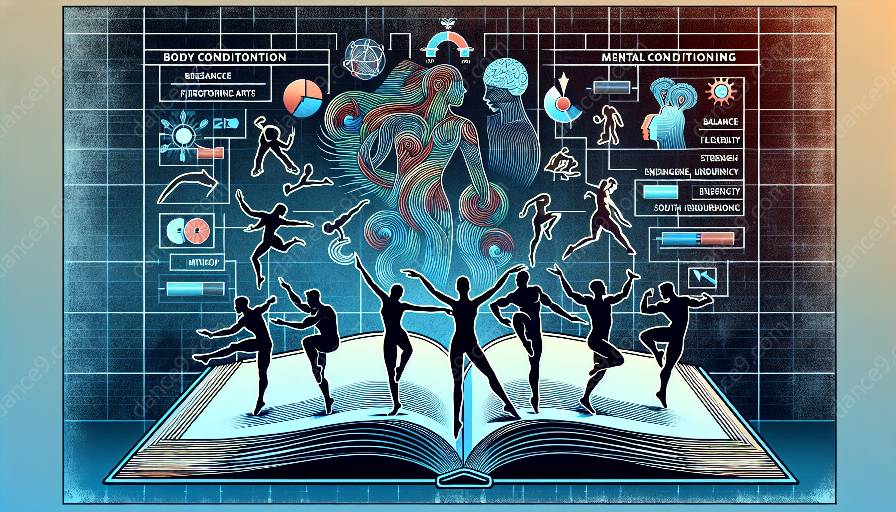In the world of dance, effective conditioning is essential for dancers to excel both physically and mentally. This article explores the principles of cross-training in dance conditioning, shedding light on how it contributes to body conditioning for dancers and enhances their physical and mental health.
Understanding Cross-Training in Dance Conditioning
Cross-training in dance conditioning refers to the practice of incorporating various types of exercise and activities into a dancer's training routine. It aims to improve overall fitness, prevent injury, and enhance performance by targeting different muscle groups and movement patterns.
Principles of Cross-Training
1. Balance and Variety: Cross-training ensures that dancers engage in a diverse range of activities, such as strength training, flexibility exercises, cardiovascular workouts, and mind-body practices. This balance and variety help prevent overuse injuries and build a well-rounded physical foundation for dancers.
2. Specificity: Despite the diversity in activities, cross-training should align with the specific physical demands of dance. This may include exercises that mimic dance movements, targeted muscle strengthening, and flexibility routines tailored to dance techniques.
3. Rest and Recovery: Cross-training programs should incorporate adequate rest periods to allow the body to recover and adapt to the physical stress. This principle is crucial for preventing burnout and promoting long-term physical and mental well-being.
Benefits for Body Conditioning in Dancers
Cross-training contributes significantly to body conditioning for dancers in several ways:
- Improved Strength: By engaging in activities such as resistance training and bodyweight exercises, dancers can build strength in muscles that are not typically emphasized during dance practice.
- Enhanced Flexibility: Incorporating yoga, Pilates, or dedicated stretching routines into cross-training can enhance dancers' flexibility, leading to better performance and reduced injury risk.
- Cardiovascular Fitness: Including cardio workouts in cross-training helps improve dancers' endurance and stamina, essential for sustaining high-energy performances.
- Injury Prevention: Cross-training exposes dancers to different movement patterns and challenges, reducing the risk of overuse injuries and promoting overall musculoskeletal health.
Impact on Physical and Mental Health
When it comes to physical and mental health in dance, cross-training plays a pivotal role:
- Stress Reduction: Engaging in a variety of activities through cross-training can alleviate mental stress and prevent burnout often associated with the repetitive nature of dance practice.
- Body Awareness: Cross-training exercises can enhance dancers' proprioception and body awareness, leading to better technique, posture, and injury prevention.
- Positive Mindset: The sense of accomplishment from mastering new skills or achieving progress in different fitness domains can boost dancers' confidence and overall well-being.
- Longevity in Dance Career: By promoting a well-rounded physical foundation and minimizing injury risk, cross-training supports dancers in sustaining long and fulfilling careers in dance.
Conclusion
Cross-training in dance conditioning is built upon the principles of balance, specificity, and rest, contributing significantly to body conditioning for dancers and enhancing their physical and mental health. By integrating diverse activities that cater to the demands of dance, cross-training paves the way for improved strength, flexibility, cardiovascular fitness, injury prevention, stress reduction, body awareness, positive mindset, and longevity in dancers' careers.


































